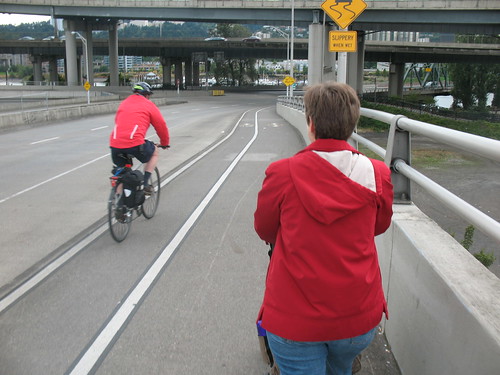The U.S. Surgeon General recommends that we participate in 30 minutes of activity most days of the week. Walking might seem like a suitable approach to attaining this goal, but it can also be dangerous when practiced in the presence of automobiles. Motor vehicle collisions with pedestrians accounted for 4,808 deaths in 2002. The number of reported injuries involving pedestrians that year was much higher, at 71,000.
Pedestrian fatalities represent just over 11 percent of all traffic fatalities, yet walking trips account for only about 6 percent of all trips in the United States. Despite these statistics, walking remains a healthful, inherently safe activity for tens of millions of people every year. Recent numbers from the Bureau of Transportation Statistics reveal that three-quarters of U.S. adults (152 million) walked, ran, or jogged for more than 10 minutes within the past 30 days.
Clearly there is a need for transportation facilities that can safely accommodate the needs of pedestrians and bicyclists of all ages and abilities. Communities have been responding to this need with driver and pedestrian education campaigns,safety programs for schoolchildren, traffic calming measures, safer crosswalks for all user groups including the handicapped, improved surfaces and lighting and advertising campaigns to raise awareness of pedestrian issues.
The following case studies highlight various education and safety programs and facility improvements that some communities have implemented:
Pedestrian fatalities represent just over 11 percent of all traffic fatalities, yet walking trips account for only about 6 percent of all trips in the United States. Despite these statistics, walking remains a healthful, inherently safe activity for tens of millions of people every year. Recent numbers from the Bureau of Transportation Statistics reveal that three-quarters of U.S. adults (152 million) walked, ran, or jogged for more than 10 minutes within the past 30 days.
Clearly there is a need for transportation facilities that can safely accommodate the needs of pedestrians and bicyclists of all ages and abilities. Communities have been responding to this need with driver and pedestrian education campaigns,safety programs for schoolchildren, traffic calming measures, safer crosswalks for all user groups including the handicapped, improved surfaces and lighting and advertising campaigns to raise awareness of pedestrian issues.
The following case studies highlight various education and safety programs and facility improvements that some communities have implemented:
-In Boulder, CO, city officials analyzed and tested ways to improve vehicular traffic control compliance at crosswalks. The results indicate that drivers are now paying more attention.
-In Phoenix, AZ, hundreds of schools are now safer places for schoolchildren to walk because of its crosswalk safety program.
-In Oregon, the city of Portland took safety one step further with its accessible pedestrian signal (APS) program.
-In Seattle, Councilmember Richard Conlin initiated a citywide pedestrian awareness program.
-“Slow down! Chill out! Drive well!” The San Francisco Department of Public Health campaigned for increased pedestrian awareness and reports improved driver behavior.
 |
shared bicycle / pedestrian sidewalk in use, Portland, by Mark Stosberg |
more about pedestrianization:
No comments:
Post a Comment